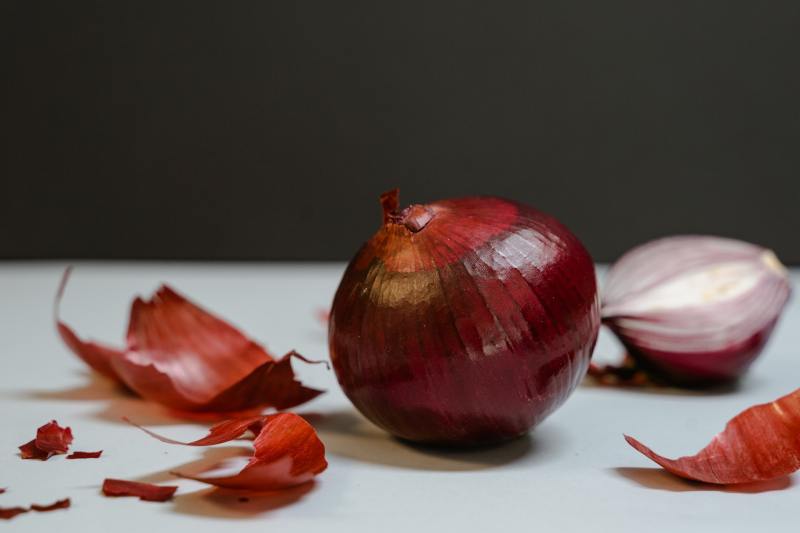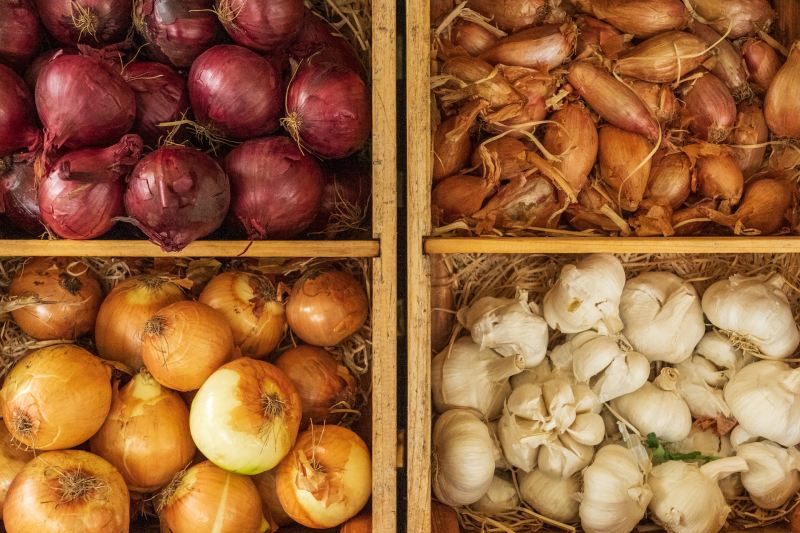They may be the first thing we toss in the bin when it comes time for dinner prep, but it turns out that papery onion and garlic skin actually has some pretty incredible talents other than frustratingly sticking to our fingers. These are our favorite onion skin and garlic skin benefits.
Benefits of onion and garlic peels
1. They add nutrients to your diet
It may sound peculiar, but you can actually eat your onion and garlic skins. And while that papery skin may not be the first thing you want to turn to when it comes time for a midnight snack, it can actually be incorporated into your recipes. Add garlic and onion peels to stock for added flavor, grind, and mix them into savory baked goods. However you choose to include them in your cooking, you can rest assured that you’re getting extra boosts of vitamins A, C, E, as well as many additional antioxidants. Skins are also a hefty source of flavonoids, including quercetin, a potent antioxidant and anti-inflammatory.
2. They add protection and flavor during the cooking process
Keeping the skins on onions and garlic during the roasting process has many benefits. Firstly, all of the wonderful health benefits mentioned above. By keeping the skin intact as long as possible in the cooking process, more nutrients can make their way from the skin into your dish. But by keeping that skin on, you’re also protecting the ingredients themselves from harsh cooking and over-browning. Onion and garlic skin will help to protect the more fragile flesh beneath from high heat, providing you with a softer, gentler, more flavorful ingredient.
3. They can relieve muscle cramps
Onions — especially onion skins — are rich in anti-inflammatory properties. By steeping your onion skins in hot water for a few minutes to make tea, you can help to alleviate muscle cramps and tension throughout your entire body. Enjoy before bedtime for full-body relaxation.

4. They’re great for the garden
It turns out all those added nutrients in onion and garlic skins aren’t just good for your body. They’re great for your garden, too. Instead of tossing those skins in the garbage, compost them and put them right back into the ground where all of those wonderful nutrients can help other ingredients grow and flourish.
5. They relieve itchy skin
In addition to all of their other health benefits, garlic and onion skins contain anti-fungal properties that help to alleviate itchy skin ailments, including bug bites and athlete’s foot. Simply apply onion or garlic skin-infused water to the affected area for instant relief.
6. They’re to dye for
Did you know that onion and garlic skins can be used for dyes? By boiling skins in water, you can create a solution that will give a beautiful golden brown hue to most fabrics, including wool, linen, and silk. It will even help to eliminate gray hairs and give them a natural shine and bouncy texture. Who knew?!




